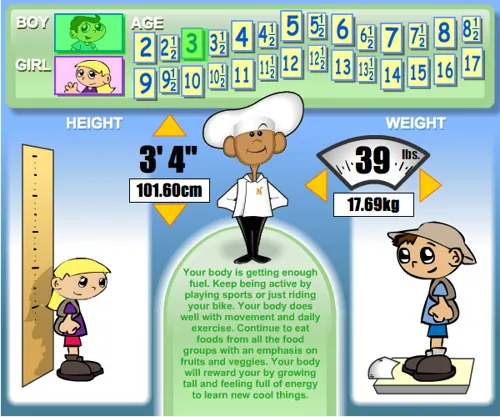Broccoli Isn’t the Bad Guy!
By Morgan Crawford a Recent ASU Nutrition Student
Why does this tree-like veggie get such a bad rap? From our own dining tables to the big screens, broccoli is always shown as the bad guy! Well as a broccoli-lover myself, I hope that I can change some minds about this truly delicious, and versatile vegetable.
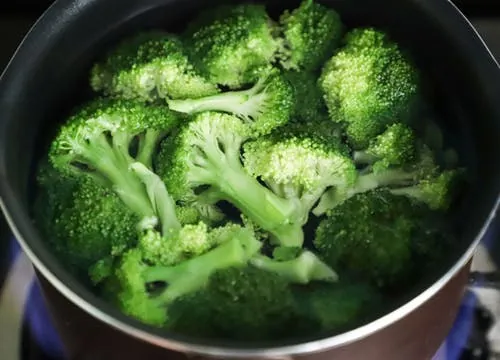
Something you may not know, broccoli belongs to a family known as cruciferous vegetables. Other varieties within this group include Brussel sprouts, cabbage, turnips, collard greens, bok choy, cauliflower, and watercress. This specific family of produce are extremely high in vitamins and are deemed some of the most nutritious vegetables. One defining characteristic of cruciferous vegetables is their content of sulfur compounds, called glucosinolates. That is what gives these vegetables their pungent odor and bitter flavor. When eaten, glucosinolates are broken down into several other compounds, including thiocyanates and indoles, which have incredible healing effects on the body. Several studies have shown that the consumption of these vegetables significantly lowers the risk of cancer.
Another super power of this mighty vegetable is its ability to build strong bones. Many people are aware that calcium is the main component of bone tissue, and while it is certainly a vital nutrient to have in a balanced diet, vitamin K is arguably even more important. It plays a major role in keeping bones strong by ensuring that calcium is directed to the right places in the body.
Vitamin C is another nutrient that is found in broccoli. It is a powerful antioxidant that strengthens the immune system, protects the body from free radicals, fights aging, and promotes collagen production. Like other antioxidants, vitamin C is known to be effective in preventing the growth of cancer cells.
Now that you know a little bit more about the health benefits of broccoli, perhaps you will consider adding a bit more of it to your plate! Not only is it packed with healthy fiber, vitamins, and other nutrients, it can also be quite delicious. The way you prepare it is the key; I find that roasting in the oven produces the most delicious, nutty flavor. It is also great raw in salads. Be adventurous and try out new exciting ways to cook this tiny tree. Here are two recipes to get you started!
Ingredients:
Slaw
¾ cup quinoa- uncooked
1.5 cup water
½ cup sliced almonds
2-3 heads of broccoli
1/3 cup fresh basil- chopped
Dressing
½ cup olive oil
2 tbsp. lemon juice
2 tbsp. Dijon mustard
1 tbsp. apple cider vinegar
1 tbsp. honey
2 garlic cloves- minced
salt and pepper to taste
red pepper flakes if desired
Directions:
- Rinse dry quinoa in a mesh strainer. Combine rinsed quinoa and 1.5 cups water in a medium pot. Bring to a boil, then reduce to simmer and cover with a lid. Cook for 15-20 minutes or until all the liquid is absorbed. Once cooked, allow to cool and set aside for later.
- Toast almonds in a dry pan until fragrant. Keep careful watch and stir frequently to prevent burning.
- Shred broccoli. You can do this by hand with a knife- cutting broccoli heads into small shreds. You can also do this in a food processor.
- For the dressing, pour everything into a small bowl or measuring cup and whisk until combined.
- Add cooked quinoa, broccoli, basil, and dressing in a large bowl. Mix together adjust seasoning if desired.
Ingredients:
2 heads of broccoli
¼ olive oil
4 garlic cloves- minced
½ tsp. salt
3 tbsp. sliced almonds
2 tsp. lemon juice
2-3 tbsp. Parmesan or pecorino cheese
lemon zest of half a lemon
Red pepper flakes- just a pinch
Directions:
- Preheat oven to 475 degrees.
- Slice broccoli into thick slices, much like a broccoli steak. They should be about ½ inch thick.
- Mix together the olive oil, garlic, and red pepper flakes.
- Add broccoli and coat in the oil mixture.
- Place on a baking tray and roast for 10 minutes.
- Take out of the oven, flip the broccoli steaks over, and add almonds.
- Roast for another 8 minutes until broccoli is tender.
- Place on a serving tray and sprinkle with cheese, salt, lemon juice, and lemon zest.
For more fun and exciting blog articles be sure to check out the Fill Your Plate blog. Are you looking for some recipe inspiration? Check out the Fill Your Plate recipe section.
Nutrition Issues When Your Child is an Athlete
Conrad Sanders, NDTR
Graduate, College of Agriculture and Life Sciences
Recent Dietetic Intern I.S.P.P. University of Arizona
University of Arizona
In today’s world, we’re being constantly inundated with fad diets and ways to lead a healthier lifestyle in an effort to thwart a growing concern in America. The ‘obesity epidemic’ is a common headline nowadays and it is becoming more prevalent in adolescents and children. But what about that minority of young athletes involved in sports year-round or the incredibly active kids getting in the recommended hour of physical activity a day? Their nutritional concerns are going to be vastly different than those trying to lead a healthy lifestyle as they’re already doing it. What are their hydrations needs, especially during the ‘pleasant’ weather we have here in Arizona? Are they supposed to grow healthy and strong while being so active? Children are not just ‘small adults,’ they are experiencing rapid changes in their body that can’t be remedied with the same solution adults are using.
The basic nutritional needs of children compared to adults are basically the same: they both require energy, need to stay hydrated, and require micronutrients (things found in those pesky fruits and vegetables). The amount of energy they are getting from carbohydrates and protein, as well as their fluid needs, can be scaled down from adults while paying attention to their rate of growth. I read something in a sports nutrition textbook during college that stuck with me and I think it should be followed as a basic guideline: “Children who are training should be gaining weight normally, so if they are losing weight or have stabilized, they aren’t meeting their calorie requirements.” As a parent, it’s important to be cognizant of your youngster’s weight over time and make sure he’s not become stagnant in his weight trend.
All of the above makes sense, but at this point, I’m willing to bet you’re scratching your heads wondering what you can do to ensure your young athlete is meeting his activity needs! Well, never fear, below I’ve outlined some basic guidelines you can follow to ensure your child is eating enough calories and protein to support growth with enough variety in their diet to allow them to maintain a wide base of nutrients.
A couple notes that might allow you to better utilize the information provided in the following section:
- Calories: needs for your child can be found by plugging your child’s measurements into the following equation:

- To get kilograms, divide weight in pounds by 2.2. Ex: 153 pounds = 69.5kg (153/2.2=69.45)
- To get centimeters, multiply inches by 2.54. Ex: a 6 ft. tall person is 183cm (6 feet=72 inches; 72 x 2.54 = 182.88cm or 1.83 meters)
- Hydration: I feel this is one of the most important factors to be aware of in your athlete. Proper hydration is paramount to performance and bodily function. Kids are better at regulating their body temperature compared to adults due to a lower sweat rate and increase in blood flow under the skin. This leads to a more efficient cooling system, but it doesn’t mean they are off the hook when it comes to hydrating. The last thing children are thinking about when they are having fun is drinking water. Just like you have to tell your kid to lather up the sun cream before going outside, so too should you be reminding them to drink. It’s important for them to drink between 17-20oz of water 1-2 hours before a prolonged activity (such as practice), a gulp of water every 20 minutes while engaging in an activity, and then 16-24oz for every pound lost. I realize that weighing your child before a game or practice and then after to determine their fluid losses isn’t realistic, but be aware that there will be water losses incurred during a practice or game that need to be replaced. Sports drinks are good ways to replenish lost fluids and electrolytes while providing quick calories but should be reserved for tournaments, intense exercise of 90 or more minutes, and prolonged periods of exercise. Most sports drinks have as much sugar as soda in them, so it’s important to be aware of that. For the most part, water will do just fine and the rest of their needs can be obtained from food.
- Carbohydrates: This is what I refer to as ‘premium fuel’ for the body. Without this, our muscles are unable to do the tasks we ask of them. This is the most important source of energy and should make up at least 55% of our daily caloric intake. With days where your child has a heavy training day or long bouts of exercise, their needs will be even higher. It’s recommended that youth athletes get about 6-10 grams of carbohydrates per kilogram of body weight (g CHO/kg). Choose the lower end on easier practice days or days when inactive, and the higher end during a heavy training day or multi-day event. It’s important to choose those complex carbohydrate sources like whole grain bread and pastas, brown rice, sweet potatoes, beans, and legumes. The more variety, the better. It also broadens the palate of your child making them accepting of trying new things as they age.
- Protein: Protein is the building block of our muscles, so it’s imperative children get them while growing and it’s paramount in repairing the damage done to muscle tissue during exercise or activity. We tend to think that our bodies need A LOT of protein, and although we need some, protein should really only account for 10-15% of our overall daily calories. Experts recommend 0.95 grams protein per kilogram of body weight for kids aged 4-13 and 0.85 grams protein per kilogram body weight for adolescents 14-18. This is a range, and a basic guideline as different sports and body types may require a higher protein intake. Leaner cuts of meats such as pork, poultry (chicken and turkey), and fish are great sources of protein for you and your child. Fatty meats such as beef should be eaten sparingly as they have been shown to have a higher correlation with cardiovascular disease and colorectal cancer down the road. Eggs, quinoa, low-fat dairy (yogurt and milk), as well as lentils, are other, vegetarian sources of protein.
- Fats: Last, but certainly not least, we have the final macronutrient. Fats are imperative to hormone production and regulation (something I hear is important for adolescents experiencing puberty), storing energy, padding and insulating our vital organs, and helping to absorb key nutrients. Fat should account for about 20-35% of your overall daily caloric needs. Make sure to consume healthy fats found in avocados, eggs, fatty fish, olive oil, and nuts/nut butters. Fat intake can be adjusted each day as carbohydrate needs fluctuate, so on heavy training days, fat might only be 25% of calories consumed while carbohydrates could account for 65%. Fat isn’t the villain we’ve been led to believe it to be, it’s a crucial macronutrient for growth and homeostasis.
- Fruits and Vegetables: Most fruits contain carbohydrates and fiber, so they could be lumped in with carbohydrates above, but what kind of nutritionist would I be if I didn’t emphasize the singular importance that fruits and vegetables provide. Skittles has adopted the slogan ‘taste the rainbow’ which I like to think of when putting a meal together. The more color you can squeeze onto a plate, the more micronutrients you are providing your child. It’s recommended we get 4-6 servings of fruits and vegetables a day. That’s quite achievable, and as a parent, it’s your duty to provide your child with the building blocks for success.
So what do you do with all the aforementioned information? The most important thing you can do for your child is have regular meals. That means making sure they have a healthy breakfast before leaving for school, snacks for when they inevitably get hungry throughout the day, and a dinner. That’s right, I’m advocating bringing back family dinner. Your child will love helping you out in the kitchen and will learn skills that will benefit him/her for the rest of his/her life. Including your child in the production of their meal will allow you to impart valuable knowledge to them about the importance of nutrition and provide a way for you to bond with them.
Check out this cool website to see what should be on an athlete’s plate.
file:///C:/Users/commassist/Downloads/Athlete%20Plates%20Moderate%20Day%20Handout.pdf
For more fascinating articles like this one check out our Fill Your Plate Blog. For some healthy recipes that the whole family will enjoy check out the recipe section.
Fill your Plate: Hidden veggies and fun snack for kids
By Sandra J., Dietetic Intern at the University of Arizona
Making meals and snacks that your kids will eat and like can be challenging. As busy parents, making creative meals may sound impossible. So Much so, that parents will settle with our kids often eating pre-packaged meals like Mac N Cheese.
As a parent and nutritionist, I know the importance of vegetables and fruit. However, I struggle to get my children to eat their veggies but I try to find ways to sneak them in their plate (meals).
Here is an easy pasta dish that has whole grains and some fiber from the pasta, vitamins, and minerals from the marinara/ spinach sauce and protein from a kid’s favorite food… cheese!
Give this recipe a try, parents!

Bows of Pasta
Ingredients:
1 box (16oz) of whole wheat bow tie pasta
Jar (16oz) of Marinara sauce
1 (16oz) bag frozen spinach (thawed and strained)
Parmesan cheese 2 cups
Directions:
1). Cook pasta as directed.
2). In a blender, blend the marinara and thawed and strained spinach.
3). After pasta is cooked, strain and place back in hot pot.
4). Turn heat on medium. In the hot pot, combine blended marinara and spinach sauce with pasta bows.
5). Add the shredded Parmesan cheese and gently fold (mix) everything together until heated (about 5 minutes).
Notes: Blending the thawed spinach into the marinara sauce adds an extra boost of nutrition such as vitamin A, C, K, folic acid, iron, and calcium. No wonder Popeye ate this to stay strong and healthy!
If your little is not a fan of tomatoes or you just need an idea to swap the marinara sauce for something else, use pesto sauce instead.
Teddy Toast
(recipe adapted from “Teddy Bear Toast” New Horizon Academy Kids Cuisine, https://newhorizonacademy.net/recipe-teddy-bear-toast/)
Weather this is prepared for breakfast or for a fun snack, this take on toast sets your kids up for “bear-y” good day!
This toast has whole grains and fiber, plant protein from the peanut butter and vitamins and minerals from the fruit.
Ingredients:
Whole wheat toast
Peanut butter*
Banana, sliced
Blueberries (washed and dried).
Directions:
1). Toast 1 slice of whole wheat bread.
2). Spread about 1 tablespoon of peanut butter onto bread.
3). Slice banana into coins and use banana slices for ears and a nose.
4). Use the blueberries for eyes and top of the nose (place one blueberry on banana slice).
Serve these “Teddy Toasts” with some low-fat milk (8oz), some blueberries and the rest of the banana that is not used on little Teddy.
*Note: Try getting a no sugar added peanut butter to help reduce the amount of sugar your child may get on a daily basis.
You can also use raisins in place of the blueberries to change things up.
I hope these ideas can be added to your kitchen toolbox of recipes. Enjoy!!
Image from: “Teddy Bear Toast” New Horizon Academy Kids Cuisine,
For more fun recipes check out the website. Also check out the produce in season section, to get some yummy fresh produce.
Fill Your Plate With… Rhubarb!
By Morgan Crawford, Current ASU Nutrition Student
So, you’re wondering what rhubarb even tastes like, let alone what to do with it! I am here to provide all the information you could ever need about this brightly colored stalky vegetable!
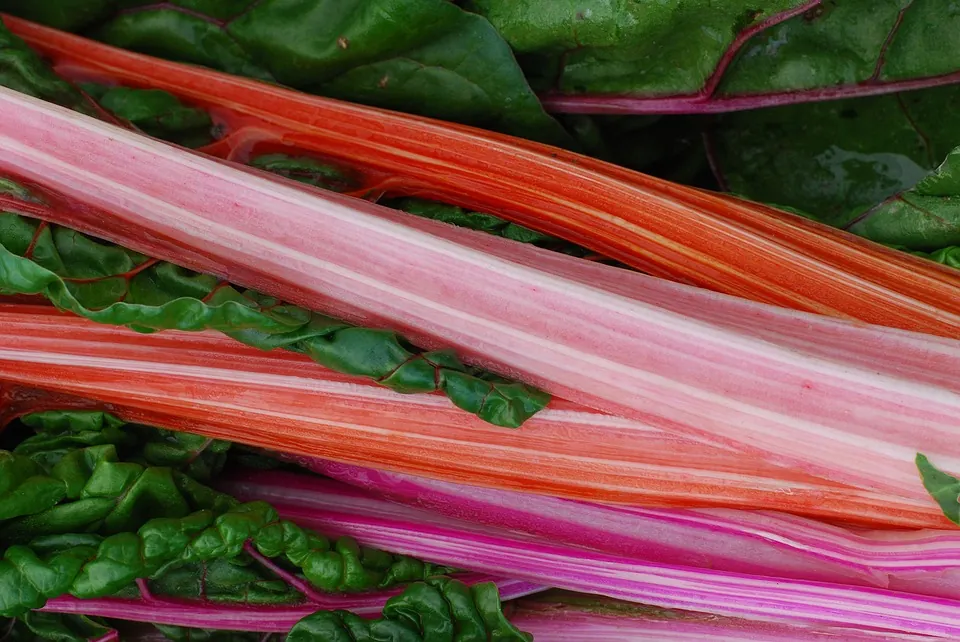
Rhubarb is a perennial plant, meaning that it remains in the ground after harvest and will continue to produce for several years. Between seasons of harvest, it requires very little upkeep, making it a great addition to any garden. One thing that should be considered though, is that the leaves are actually quite poisonous due to the high levels of Oxalic acid. Though the leaves must be avoided, the red stalk of the vegetable is perfectly safe to eat.
Rhubarb has quite a unique growth process. There are actually two different methods for planting and growing this vegetable. The traditional route is to plant it like any other vegetable and harvest in Spring. The second option is called forcing, where the rhubarb is planted in January and a large clay pot is placed over the crown of the crop to keep any light from reaching it. This forces the rhubarb to grow much more quickly and be ready for an earlier harvest. One warning for this method is that forcing the same crop several times will result in a weaker plant.
There are also several varieties of this perennial vegetable, which include Holstein Blood Red, McDonald’s Canadian Red, Canada Red, Colorado Red, Victoria, Riverside Giant, Turkish, German Wine, Sutton, Sunrise,Timperley Early, and Glaskins Perpetual. Who knew there were so many different kinds of rhubarb!
For me, the nutritional quality of food is always a top priority, and rhubarb does not disappoint in this department. It is chock full of vitamins, minerals, fiber, and more. Rhubarb is high in vitamin K, A, B, iron, potassium, and phosphorus. The level of vitamin K is the most notable quality of this vegetable. Vitamin K is responsible for blotting clotting and, brain and neural health. Recent studies have even shown that it may even be a powerful preventative of Alzheimer Disease and overall improvement of memory.
I have to be honest with you and say that I had never personally cooked with rhubarb until just recently. After talking to some of my friends and family, it turns out that I’m not alone! Rhubarb is one of those vegetables that I think people just don’t know what to do with. At least that’s how I felt about it. My grandmother always had rhubarb in her kitchen; she used it for pies, muffins, and even jams and sauces. I was just confused about why she was using a vegetable in sweet dishes! As it turns out, rhubarb is primarily used as a fruit, even though it is technically classified as a vegetable. Because rhubarb is treated as a fruit, it is perfect for sweet recipes such as quick breads, cakes, pies, and jams. It is also quite commonly paired with strawberries. Many people compare its taste to that of a very tart green apple. It has a sharp bitter flavor, which is why it is almost always has to be paired with sugar. If used correctly, it adds a delicious flavor to any sweet dish.
Here is a recipe for Rhubarb Muffins that I recently found on Pinterest:
Ingredients
- 1½ cup all-purpose flour
- ⅔ cup coconut sugar
- ½ teaspoon salt
- 2 teaspoons baking powder
- ¼ teaspoon cardamom
- ⅓ cup coconut oil melted
- ⅓ cup unsweetened applesauce
- ⅓ cup non-dairy milk I used almond milk
- 1 teaspoon vanilla extract
- ¾ cup chopped rhubarb
- ¼ cup sliced almonds
Instructions;
- Preheat your oven to 375 degrees Fahrenheit.
- Line muffin tray with paper or foil muffin liners.
- Combine the dry ingredients (flour, baking powder, cardamom, coconut sugar, and salt) in a large bowl.
- Add in wet ingredients (milk, coconut oil, vanilla and applesauce) and stir until combined.
- Gently fold in rhubarb.
- Portion batter into muffin cups, filling them about ¾ to the top.
- Sprinkle sliced almonds on top.
- Bake for 15-20 minutes, using a toothpick or small knife to see when it comes out clean.
For more fin and exciting blog, articles be sure to check out the Fill Your Plate blog. Are you looking for some recipe inspiration? Check out the Fill Your Plate recipe section.
Start your Own Herb Garden
By Victoria Gabrielle Bravo, University of Arizona ISPP dietetic intern
Starting an herb garden in your own home is easier than once thought. Having fresh herbs to use will greatly improve the health and taste of all dishes. Using fresh herbs is a great way to add flavor to your cooking at home, but there are also many health benefits. Using fresh herbs usually helps with cutting down on sodium intake. Excessive sodium intake can be dangerous to your health, even if you do not have cardiovascular disease. Too much sodium, or salt, can lead to high blood pressure, stroke, and other chronic diseases. By replacing salt with fresh herbs, you are reducing your risk. By simply using herbs to season dishes, you are adding various nutrients to your food as well. Herbs are a great source of vitamins A, C, E, and K. Many herbs also act as antioxidants and have anti-inflammatory properties.
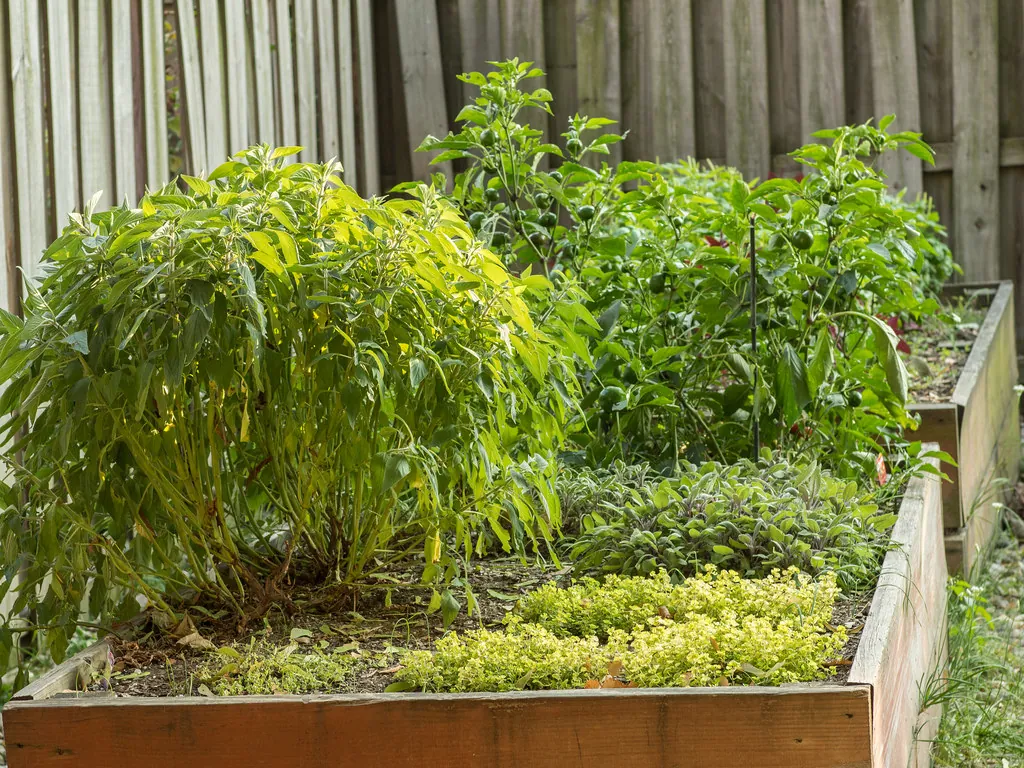
Follow these steps to create an herb garden:
- Choose a space near your kitchen.
- Prepare the space by loosening the soil.
- Dig holes as appropriate to each herb.
- Label herbs.
- Plant flowering plants (zinnias are a great flowering plant)
- Water as indicated by the individual herb.
| Herb | Spacing | Light preference | Soil conditions | Germination | Time to harvest |
| Basil | 12”-18” | Full sun | Rich, moist, well drained | 5-10 days | 10 weeks |
| Cilantro | 4”-12” | Full sun, light shade | Well-drained | 7-10 days | 3-4 weeks |
| Oregano | 12” | Full sun | Well-drained | 7-14 days | 11-13 weeks |
| Parsley | 12”-18” | Part shade | Rich, moist | 14-30 days | 10-11 weeks |
| Rosemary | 18”-36” | Full sun | Light, well drained | 14-21 days | 11-14 weeks |
| Tarragon | 18” | Sun, part shade | Well-drained | 10-14 days | 11 weeks |
| Thyme | 6”-8” | Sun, part shade | Well-drained | 14-21 days | 13-14 weeks. |
| Herb | Nutrients | When to use |
| Basil | Vitamin A, Vitamin K, Vitamin C, calcium, magnesium, iron, potassium | Cheese, salads, vegetables |
| Cilantro | Phosphorus, calcium, magnesium, potassium, vitamin A, vitamin B, vitamin C, vitamin K | Salads, salsas |
| Oregano | Vitamin A, vitamin C, vitamin E, vitamin K, fiber, folate, iron, magnesium, vitamin B6, calcium, potassium | Italian dishes, cheese |
| Parsley | Antioxidants, anti-inflammatories | Fish, vegetables, poultry, salads, soup |
| Rosemary | Vitamin C, vitamin A, magnesium, iron, zinc, calcium | Beef, soup, bread |
| Tarragon | Manganese, iron, magnesium, copper, potassium, zinc (helpful as an antioxidant) | Fish, poultry, salads, soup, vegetables |
| Thyme | Vitamin A | Fish, cheese, vegetables |
For more fun and interesting articles check out the Fill Your Plate blog, where new articles are posted every week.
5 Ways to Boost Your Immune System
By Angela Bates, Current ASU Nutrition Student
With flu season upon us, it’s a great time to check in on your health, specifically your immunity. The immune system has different kinds of cells to destroy microbes ranging from bacteria to viruses, some of which it learns to keep out. Humans have two types of immunity—natural and acquired. We are born with some natural immunity, so we don’t get sick as easily as newborns. Acquired immunity happens when we get sick and fight the microbes off or when we receive a vaccine. Unfortunately, our immune systems aren’t always up to the challenge of flu season.
Immune system issues can arise when it becomes overactive or underactive. An overactive immune system can present itself as an autoimmune disease or allergies to foods or environmental items which did not have an effect previously. According to Dr. Calabrese of the Cleveland Clinic, the immune system is hardwired to our nervous system. This means that the body automatically reacts when something invades, unless your immune system is weakened. Here are a few important ways to boost your immunity now.
1. Sleep
Every college student cramming for finals and new mother waking up for the third time in one night can tell you, a severe lack of sleep will be felt. The National Sleep Foundation investigated a study on healthy young men who were either allowed to sleep normally or made to stay awake for 29 hours straight. Researchers found that white blood cells in the sleep deprived men mirrored the stress response of the body, weakening. The University of Washington performed a sleep study on identical twins and found that a shorter sleep duration depressed the immune system.

In our busy world, it can be difficult to find time to wind down and sleep, but there are some things you can do to make it easier. Electronics emit blue light, which tells the body it’s day time. Putting down the phone and turning off the television at least an hour before bed can help your body recognize it is time to sleep. Creating a routine before bed signals to your brain that it is time to relax and get to sleep as well. Ask for decaf after 3pm so your body has time to process it before bed. Finally, make your bedroom comfortable; cool temperatures, a supportive mattress, and a good pillow go a long way.
2. Eat Healthy
Eat your vegetables… and your fruits, fiber, protein, and so on. You don’t have to eat a salad every day to reap the benefits of a healthy diet. While there aren’t many studies that look directly at what foods improve immune system function, Harvard Health states there is quite a bit of evidence that nutrient deficiencies alter the immune response. Deficiencies in zinc, iron, copper, selenium, folate, vitamin A, B6, C, and E seem to have a direct impact on immunity. If you’re not sure you are eating enough nutrients, tracking your food intake can give you an idea. When in doubt, foods such as nuts and seeds, eggs, yogurt, and leafy green vegetables contain high amounts of these micronutrients. Discuss with your doctor if you feel a multivitamin may be needed to supplement your diet.
3. Exercise
Other than giving you a cardiovascular boost, regular exercise can also help your immune system. Being overweight puts a strain on the body, including the immune system, but a healthy diet and regular exercise can help you get back to a normal weight. According to the U.S. National Library of Medicine, exercise causes white blood cells to circulate more rapidly, helps flush bacteria out of the airways, raises the body temperature which may prevent bacterial growth, and slows the release of stress hormones.

Does the thought of running on a treadmill for an hour make you want to run away? Don’t worry, experts say that just 20 to 30 minutes of aerobic exercise of any kind in a day can make a difference. You can bicycle with the kids, go for a swim, play some golf with your friends, rake leaves in the yard, or take a walk in the park with your pet. Mixing up your routine will help keep the boredom from setting in and keep your body on its toes. If you get your heart rate up, you are giving your immune system a boost it may need.
4. Don’t Forget the Basics
Wash your hands. Your hands become a breeding ground when you neglect them. We already know to wash after using the bathroom and before eating, but don’t forget other opportunities to wash. When you cough or sneeze, give your pet a treat and a pat, visit a sick person, or perform other various tasks, your hands accumulate all kinds of gunk. Washing your hands with warm water and soap for 30 seconds, being sure to scrub under nails and around wrists, then drying can prevent the flu and takes just a few moments.

The advertisements in your local drugstore aren’t just to sell you a flu shot. In fact, your insurance most likely covers some or all the cost! Even if you think you are safe from an illness, your immunity ensures others with compromised immune systems won’t get sick. The elderly should take special care to get vaccinated for the flu, pneumonia, and shingles to prevent illness, as aging can also weaken the immune system.
If you do end up sick, please stay home. Your coworkers and hairdresser would like to prevent getting sick as well, so rest up and eat well until you feel better and get back out in to the world.
5. Chill Out
We all get stressed sometimes, especially with deadlines that never seem to stop coming, no time for vacation, and those bills that show up in the mailbox each month. Emotional stress can become chronic stress, increasing inflammation and working your immune system overtime. When your body is working so hard to stay regulated when it isn’t fighting off an invader, it cannot properly protect you when it needs to.
The American Psychological Association says that psychoneuroimmunology has become an important field where researchers are finding more ways each day that our minds and body are connected. As stress hormone levels rise, immunity lowers. Almost 300 studies all came to the conclusion that stress hinders the body’s ability to defend itself. If knowing your stress is hurting you stresses you out more, relax. Take a few minutes a day to meditate, do some yoga, read a book, listen to your favorite music, or get a massage. While you perform stressful work, check in with yourself and take some deep breaths, releasing your tense muscles. Studies have found that having a support system helps with stress, so talk to your friends, spouse, or a therapist and know that taking care of your stress protects your immune system too.
While these tips should not be taken as a replacement for medical advice, they may help fill in the gaps that were missing in your immune system building exercises. Making these 5 things into habits will ensure you are healthier and your immune system can protect you when you need it most, such as during this flu season!
Angela Bates

Angie is a current student at Arizona State University in Nutrition Communications. When she’s not working on school work, Angie enjoys cooking and playing video games. She’s passionate about helping others and nutrition education. With an interest in food allergy awareness, Angie hopes to someday work for a non-profit focusing on food allergy awareness and education.
An Apple a Day…
By Morgan Crawford, Current ASU Nutrition Student
Apples are one of the absolute favorite fruits. They are super versatile, full of antioxidants, and are a delicious addition to baked goods or as a healthy snack.

This fruit has a long, rich history and has been documented as a source of nutrition since the times of Greek and Roman mythology. It is considered to be one of the most ancient fruits. In the earliest days of the Roman Empire, they were regarded as a symbol of love and beauty. It wasn’t until the 1600s that apple trees were introduced in the Americas. The first apples were known as Crabapples and weren’t entirely edible. John Chapman, who was coined the nickname Johnny Appleseed was the first to become famous for the apple orchards that he planted in Ohio, Indiana, and Illinois.
It is estimated that there are around 10,000 varieties of apples, but only 1,000 of that make up what is commercially grown around the world. While most of the country’s apples are grown in states such as Washington, Massachusetts, New Hampshire, and New York, Arizona has quite a lot of success with apple orchards. For as long as I can remember, my family has always grown apples in our backyard. I have some of the fondest memories of spending days on top of a ladder plucking apples and taking them to my mom to make applesauce, pies, and marmalades. In Arizona, apples are harvested from August to the end of October and are grown in areas such as Willcox, Prescott, Sedona, and the Superstition Wilderness. With such intense heat and dry climate, it doesn’t seem obvious that apples would grow well here, but the climate we have is actually quite perfect! The water supply, elevation, and temperatures in certain areas of Arizona make for great growing conditions.
Some of the best places to find apple orchards and apple products are right here in Arizona. Douglas Orchards is located just southeast of Tucson and grows around 1500 different fruit trees. Other location includes Reevis Ranch in the Superstition Wilderness, Date Creek Ranch in Wickenburg, and Briggs-Eggers Organic Apple Orchard in Bonita Springs Valley. Check out these orchards’ websites for events and harvesting schedules- maybe think about taking a trip to visit some of Arizona’s best home-grown apples.
“An apple a day keeps the doctor away,” right? Well, with all of the healthy compounds found in apples, it turns out that this catchy saying holds a lot of truth. Here are some of the most prominent health benefits:
- Prevention of asthma attacks
Apples are high in Vitamin C, a powerful antioxidant. A recent study has shown how supplementing the diet with high levels of Vitamin C has been linked to a decrease in asthma attacks.
- Fights bad breath
The pectin found in apples is shown to increase the production of saliva and regulates odors from the bacteria found in the mouth.
- Reduce the risk of stroke
Apples contain a flavonoid antioxidant called Quercetin, which has anti-inflammatory properties. This study shows that the consumption of this antioxidant may decrease the risk of stroke.
- Healthier digestion
The soluble and insoluble fiber found in apples leads to a healthier digestive system.
- Lower risk of diabetes
Apples have compounds called phytonutrients, or phytochemicals that have several health benefits. These compounds are designed to keep the plants themselves safe and healthy, which are the same benefits that they provide for humans. Some of these health benefits include detoxifying the body and DNA repair. All of these lead to lower risk of diabetes as well.
Here is a great recipe for Banana Apple Bread just in time for fall!
Ingredients:
- 1 3/4 cup flour
- 2 1/4 tsp baking powder
- 1/4 tsp baking soda
- 1 tsp cinnamon
- 1/4 tsp salt
- 3 to 4 Tbsp. powdered sugar or coconut sugar
- 1/2 cup almond milk
- 2 large ripe bananas
- 1 Tbsp. blackstrap molasses
- 2 Tbsp. almond butter
- 1 tsp vanilla extract
- 1 cup grated apple 1 regular size apple shredded
- 3 Tbsp. chopped walnuts (optional)
Instructions:
- Preheat oven to 365 degrees Fahrenheit.
- Mix together all dry ingredients (flour, baking powder, baking soda, cinnamon, salt, sugar).
- Use a fork to smash the banana. Add almond milk, molasses, almond butter and vanilla, and banana in a separate bowl).
- Add wet mixture to the dry ingredients and stir. Mix in the grated apple and chopped walnuts. Combine.
- Place batter in a greased loaf pan.
- Bake for 40 minutes or until a toothpick comes out clean.
- Allow cooling for 10 minutes.
For more awesome recipes check out the Fill Your Plate recipe section! Curious about what produce is in season this month? Check out what’s in season on the Fill Your Plate website.
Hi, my name is Morgan Crawford!

I am a student at Arizona State University, studying Nutrition Communication. My area of study combines two of my biggest passions: nutrition and writing. I grew up with a love for health and wellness and decided to follow those passions and pursue them as a career. I was born and raised in Gilbert and have a deep love for everything Arizona has to offer. A few of my hobbies include running, hiking, and exploring local eateries for delicious new eats.
Out of Sports Drinks? Grab a Banana!
By Erika Guzman, Recent ASU Nutrition Student
Studies find that a banana is just as beneficial as a sports beverage

Growing up, you’ve probably been given Gatorade or some type of electrolyte-recovering beverage for energy and endurance when you played sports or any activity. The flavor is just a bonus. In an article from Science Daily, there may be another healthy, reasonable alternative to help recover your body during sports: the banana.
Both sports-related beverages and bananas allow the body to last longer and recover, however, the banana has more advantages. Not only are bananas healthy and natural, but it can also help athletes and cyclists perform better once consumed. It also showed there were more advantages to consuming the fruit than the beverages. There is a greater nutritional boost in bananas. In a medium banana, it includes 3.1 grams of fiber, 0.43 milligrams of vitamin B6, and it has a healthier blend of natural sugars! The glycemic level for bananas are in the mid-range 51, so although it may seem a little high, it’s similar to other fruits such as oranges, grapes, pineapples, and mangos.
Bananas are also cost-effective and a great source of carbohydrates, about 27 grams in a medium banana, and potassium, or 422 grams, both of which are good for muscle and endurance recovery. Bananas reduce inflammation when exercising, so you can push farther and last longer, especially when it comes to marathons, endurance competitions, or simply training to improve your time. Lastly, bananas also have some antioxidant value, similar to kiwi fruits and orange juice!
Overall, bananas have been deemed one of the best, cheapest super fruits for years, and the results show how much it can do to the human body when it’s under stress or in need of an extra push for performance! Don’t worry if you don’t like the taste of bananas or simply cannot have any; sports drinks are still an alternative when you need a lift, but if you do strive for a natural, cheap replacement, a banana is a wonderful solution! Another good replacement drink is simply an ice cold glass of milk.
If you liked this article then you will love the Fill Your Plate blog. New articles are posted every week.
References
Appalachian State University. (2012). Bananas are as beneficial as sports drinks, study
suggests. Science Daily. Retrieved at
https://www.sciencedaily.com/releases/2012/05/120529113258.htm.
Neiman, D. Cl, Gillit, N. D., Sha, W., Esposito, D., & Ramamoorthy, S. (2018). Metabolic
recovery from heavy exertion following bananas compared to sugar beverage or
water only ingestion: A randomized, crossover trial. PLos One. Retrieved at
http://journals.plos.org/plosone/article?id=10.1371/journal.pone.0194843.
Nieman, D. C., Gillit, N. D., Hensen, D. A., Sha, W., Shanely, R. A., Knab, A. M.,
Cialdella-Kam, L., & Jin, F. (2017). Bananas as an energy source during exercise:
a metabolomics approach. PLos One. 7(5): e37479. Retrieved at
Filling Your Plate with Garlic
By Sarah LeVesque, Recent ASU Nutrition Student
Okay, maybe don’t fill your entire plate with it, but think about adding it to your diet. Garlic is a nutrient-packed, pungent, and beneficial addition to many dishes. The flavor and aroma of garlic is unmatched. It can be prepared and incorporated in a variety of ways. Some of my favorite ways to spice up dishes with garlic in my kitchen: I add it to oils before I sauté veggies; I add it into a marinade; I’ll put in in salad dressings. I put it on every protein imaginable (except my protein shakes).
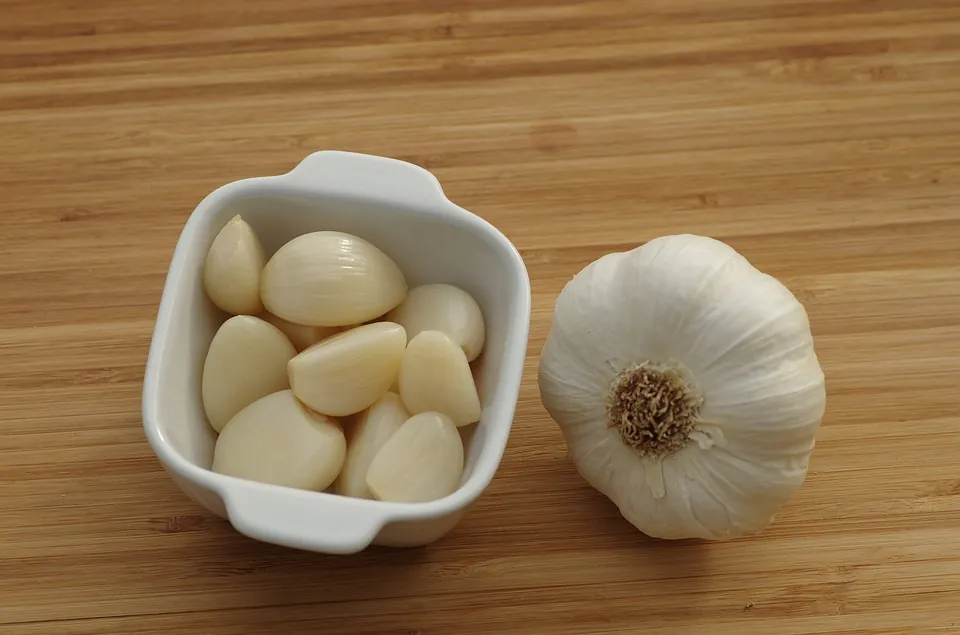
When I add it to olive oil while it’s heating up, it fills my kitchen with the subtle smell of garlic that brings me back to when my grandmother would cook her famous sauce. Garlic hasn’t always been stuck in the kitchen. It has been used to fight illnesses from the common cold to major epidemics. It’s been studied for its ability to aid the body by boosting your immune functions.
If the taste doesn’t persuade you to fill your plate with garlic, here are some nutritional benefits that garlic can offer:
- Prevents and reduces the severity of the common cold and illnesses like the flu.
This study found over a 12 week period those who took a garlic supplement significantly reduced the number of colds by 63% and shortened the length of their colds by 70%. Those are big numbers for garlic consumption! Seems as though there is one more thing we should add to the grocery list next time flu season comes.
- Little cals, high nutrients.
In just 6 cloves of garlic (about 18 grams), contains under 30 calories. It contains nutrients like manganese (23%)*, vitamin B6 (17%)*, Vitamin C (15%)*, copper, selenium (6%)*, phosphorus, calcium, and vitamin B1. Garlic also contains sulfur compounds thiosulfinates, sulfoxides, sulfides, diallyl sulfides and polysulfides, vinyldithiins, ajoenes, and sulfur-containing amino acids and peptides.
*these percentages are derived from a 1 ounce (28 gram) serving of garlic
- Medicinal properties:
Garlic is actually being studied for its potent antimicrobial activity. It’s potential to help treat cardiovascular disease and neurodegenerative diseases. Allicin, which is a thiosulfinate, is a compound that is responsible for its pungent smell. It’s also believed to be responsible for some important health benefits like reducing the risk of Alzheimer’s disease and dementia.
- Can help reduce blood pressure and promotes healthy cholesterol levels.
In a double-blind, placebo-controlled trial, which included 50 patients, demonstrated that aged garlic extract lowered systolic blood pressure of those who had uncontrolled hypertension.
Garlic has also been observed to lower the “bad” cholesterol by 10-15%. This is big news for those who suffer from high blood pressure and high cholesterol. More studies are being done, and many have suggested the health benefits of garlic, so having a jar of it in your kitchen doesn’t hurt!
- Detoxifying for our bodies.
In a four-week study, employees who were exposed to excessive amounts of lead showed reduced levels of lead in the body by 19%! Just three doses of garlic in a day outperformed D-penicillamine in reducing the symptoms of toxicity like headaches and blood pressure.
Here are some tips for incorporating garlic in your diets:
- Adding minced garlic to marinades: When I’m in the kitchen thinking about dinner, I automatically pull out my jar of minced garlic. They’re available in the produce section ready to go. It’s usually about $5 for a big jar that lasts me months. Garlic-lemon juice is my favorite marinade. I use it on boneless, skinless chicken breasts and on salmon.
Lemon-garlic Chicken recipe:
In a plastic bag or bowl (I prefer a ziplock bag), I’ll place the chicken breasts (4 pieces of boneless and skinless) in the bottom of the bag. I’ll pour enough olive oil to coat. Next, I’ll add about 2 tablespoons of garlic, and squeeze in an entire lemon. Lastly, I’ll add Himalayan salt and pepper to taste. I’ve let this marinade sit for about 10 minutes to overnight. For the best results, I found it tasted it’s best when I let the chicken marinate for 4-5 hours.
I’ll place the breasts with garlic all over them, on a lined baking sheet and cook for about 20 minutes at 425 degrees Fahrenheit, flipping once.
The safe internal temperature for cooked chicken is 165 degrees Fahrenheit.
Lemon-garlic Salmon recipe:
On a lined baking sheet, I’ll drizzle a bit of olive oil so that the pieces of salmon filet don’t stick. Once I put the salmon atop of the olive oil, I’ll flip the pieces to lightly coat the topside, but have the skins facing down. Next, I’ll add about a tablespoon of garlic (which varies with the size of the filets). If you don’t have fresh or minced garlic, garlic powder works as the perfect substitute. I’ll squeeze a half of a lemon atop the filets, sprinkle with pepper or spices (my favorite is chili powder) to taste. Fish should reach an internal temperature of 145 degrees Fahrenheit.
- I also enjoy adding garlic to olive oil while it heats up, prior to sautéing vegetables. My weekly go to is sautéed spinach with garlic and olive oil. It’s super easy, and a fast way to add some fiber and leafy greens to your diet. I recently experimented with other leafy greens, and garlic does not disappoint, so feel free to substitute spinach with your favorite. Some nutritious substitutes for spinach: bok choy, kale, or try a spinach and arugula mixes.
Some other great recipes that incorporate garlic:
Garlic Roasted Summer Squash by Julie Murphree
Kale Stir-Fry by Marieley Lopez
Julie’s Oven Roasted Red Potatoes & Asparagus by Julie Murphree
If you’re searching for more great recipes, check out the Fill Your Plate recipe section. Keep an eye out for new Fill Your Plate blog articles. New ones are posted every week.
Filling Your Plate With Beets
By Sarah LeVesque, Recent ASU Nutrition Student
Beta vulgaris!
Almost sounds like a spell in a whimsical film on sorcerers. But it won’t make beets appear on your plate. If it did, you’d be filling your plate with vital nutrients and fiber! It’s an intimidating vegetable in the produce section. If you get past its looks, beetroots can offer many health benefits. They’re high in inorganic nitrates, consist mostly of water, and have been studied for its impact on athletic stamina. If you’ve never cooked beets before and want to try them, don’t worry! Now in the grocery sections, they offer precooked beets. I usually grab a pack (about 4-5 beets) and add them to salads throughout the week.

My best advice to anyone who wants to try boiling beets at home is don’t skin them! Leaving the skin and an inch of the stem prevents bleeding, flavor loss, and keeps your fingers from turning beetroot red! When they’re done boiling, the skin comes off easier too.
Also, don’t throw out those greens! A cup of raw beet greens contains lutein and zeaxanthin, which are types of carotenoid phytonutrients that keep our eyes healthy and our vision sharp throughout our lives.
Beets are packed with nutrients!
Beets are in season winter, summer, and fall. Just one cup of cooked beets is less than 60 calories. Vitamin A, C, D, E, and K are all found in beets. Beets also offer B vitamins: B1, B2, B3, B5, B6, and B12. That’s a lot of B’s and an effortless way to remember what beets offer!
Beets are also very good sources of manganese, potassium, and copper. Manganese is an essential mineral. It plays a role in the digestion of cholesterols, carbohydrates, and proteins. It’s also involved in bone production. Potassium is an electrolyte that helps maintain blood pressure, nerve function, and muscle contraction. Copper is important for iron absorption and works with iron to form red blood cells. Copper and manganese are important cofactors for antioxidants also.
So adding beets to your plate will get you full and full of nutrients.
As if these little beets couldn’t offer anymore, they are also host to good sources of fiber, magnesium, phosphorus, vitamin C, iron, and vitamin B6. Fiber helps keep blood sugar levels in check, lowers cholesterol levels, aids digestion, and can also help you stay fuller longer. Magnesium is important because it’s involved in many reactions in our bodies. From creating new proteins from amino acids to helping repair DNA and RNA, magnesium is a helper molecule! Magnesium has also been studied as a booster in exercise performance, fighter against depression, and can help fight migraines.
Beets are excellent sources of folate. It’s an important B vitamin for women who are pregnant as it has been shown to reduce the risk of birth defects. It is also an important vitamin for cellular function and tissue growth.
Plant Compounds in Beets
Betanin is responsible for the color of beets. It’s been studied for its possible health benefits. It’s an exceptional antioxidant because of its electro donating abilities. It also exhibits anti-inflammatory properties.
Beets are high in inorganic nitrates. Nitrates have been in the spotlight for its health risks but studies have shown that the benefits do outweigh the risks when it comes to eating our vegetables. Research has shown that beets and beetroot juice actually help lower blood pressure. Nitrates are also being studied for its ability to enhance physical performance. Nitrates help our mitochondria be more efficient, helping us out during high intensity and endurance exercises.
Beetroots are power vegetables. They help lower blood pressure, can increase your exercise performance and are packed with nutrients that our bodies need. Even the beet greens are good for you! Beets are great on salads, as a soup, and as a juice. There is even makeup that uses the beetroot red color, which isn’t doubtful since it stains!
I bet it’s been a while since you’ve had them in your kitchen! Add some variety, try something new, and fill your plate with beets. They’re good for you!
Most importantly our Arizona Farmers grow lots of these wonderful beets!
For awesome recipes for beets check out this Fill Your Plate recipe section! You can also locate where beets are locally sold in Arizona on the Fill Your Plate website!
The Wonders of Lettuce
By Kevann Jordan, Recent ASU Nutrition Student
Lettuce is a vegetable that has taken the back seat over the past few years. All the attention has been on kale and its amazing nutritional contents. While kale does have great nutritional value lettuce should not be forgotten, especially the darker green lettuces. Lettuce can lower cholesterol, help control cancer, protect neurons in our brain, induce sleep, help control anxiety, lower inflammation and contains a whopping amount of antioxidants.
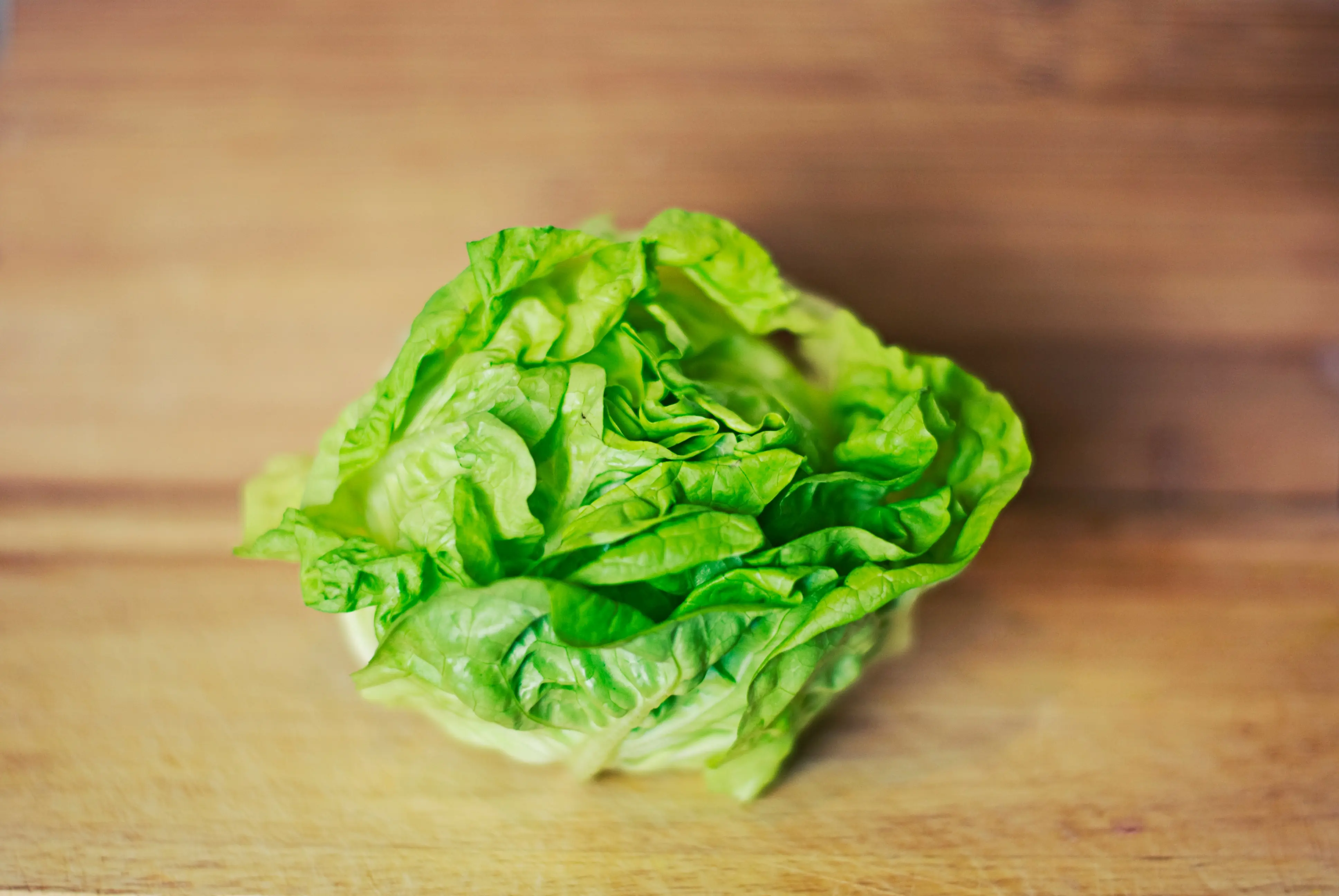
Lettuce contains a large amount of water and fiber which is a powerhouse team. It also contains protein, fat, carbohydrates and sugars. Minerals and vitamins are plentiful in lettuce; calcium, iron, magnesium, phosphorous, potassium, sodium, zinc, thiamin, riboflavin, niacin, folate, vitamin B-6, C, A, E and vitamin K.
What does all this mean? It means lettuce is great as an anti-inflammatory vegetable due to its containing lipoxygenase and carrageenan. This leafy plant has antimicrobial properties and antioxidant properties. The antioxidants within lettuce are barriers against free radicals preserving healthy tissues and cells. Antioxidants counteract free radicals and neutralize these free radicals before they can attack. Which is great news, since there is no way to hide from free radicals there is a way to stop them before they can do damage.
Lettuce also has some very special attributes. Uniquely lettuce has the ability to induce sleep and reduce anxiety. This is great news for people who suffer from anxiety and are looking for additional nutritional supplements that can help manage their anxiety. In Arabian medicine, or Islamic medicine also known as Unani medicine, lettuce is used as a sleep inducer. Lettuce contains a depressant chemical that decreases heart rate and ventricular contractions and also blocks excitatory signals to muscular and neural tissues which help to bring on a deep sleep. The Unani system and more recent research have found that lettuce contains anxiolytic properties which help to manage anxiety levels.
Lettuce can be used for meals other than salads. You can add lettuce to smoothies or juice the leaves. Use them in Sautés and stir-fries, make them into slaws, soup, sauces, lettuce wraps, or grill a head or a wedge.
In Arizona, we grow lots of lettuce. Yuma Arizona is the winter lettuce bowl of the country.
Try this amazing lettuce recipe listed below:
Green Sauce Rice Bowl
For the Green Sauce
1/3-1/2 cup food tasting olive oil
1 heaping tablespoon Dijon mustard
Stems from 1 bunch watercress or upland cress, cleaned and dried
4 scallions, light and dark green parts only, cut into 1-inch pieces
1 large garlic clove
For the Rice Bowl
1 cup cooked brown rice
Cooked or uncooked vegetables (broccoli, zucchini, yellow squash, asparagus, small potatoes or sweet potatoes, snap peas or winter squash)
Reserved watercress leaves
¼ cup toasted walnuts or cashews per serving
Thinly sliced scallion, to garnish
Directions
- Place 1/3 cup olive oil and the mustard in a blender, and top with the watercress stems, scallions, and garlic. Puree until very smooth, pouring in additional olive oil as needed to get the motor running and unit the sauce is smooth and fluffy.
- Place the rice in a serving bowl. Arrange your vegetables, as well as a heaping tablespoonful of sauce, on top of the rice. Crumble the nuts over then garnish with the scallions, and serve.
If you’re looking for more lettuce recipes check out the Fill Your Plate recipe section. Or, if you’re looking for new recipes to bring to the family, Fill Your Plate offers hundreds of unique recipes.
The Benefits of Electrolytes
By Emily Carver, Recent ASU Nutrition Student
It’s summer and that means more and more time spent outside. Warmer weather brings about such happiness as children flood the parks, local swimming pools, and sports arenas. With extra playtime in the sun, children (and adults alike) start to get thirsty and begin looking for something to drink. What’s triggering that thirst?

We all have an internal command center that keeps track of when our bodies are in need of something. When it comes to a dip in fluids, our thirst mechanism kicks in and tells us we’re thirsty. This could be because we might have had too much salt with a meal, ran around long enough to sweat profusely, or been so sick and unable to keep anything down.
When the thirst mechanism signals the thirst alarm, our body goes to work ensuring it stays protected for as long as it can. Signals to our kidneys reduce our urine flow so the water can return into our bloodstream. If whenever you’re thirsty you notice your mouth is dry, this is another indication the body is at work to protect you, as it draws water out of your mouth to your bloodstream, where it’s needed most. All of this is done to stave off dehydration. Our bodies are quite fascinating and with our body weight between 50-70% fluid, it’s clear to see how serious our bodies take a reduction in fluid.
One thing that’s important to maintain and regulate our fluids are electrolytes. They balance it by controlling the movement of fluid in and out of our cells. What are electrolytes exactly? They’re minerals like sodium, potassium, calcium, and magnesium that balance many of our body functions.
Electrolytes are critical in enabling nerves to respond to stimuli. Sodium and potassium play a key role in making sure our nerves fire and respond completely and accurately. Interestingly enough, our muscles can be effected from low levels of electrolytes, and that’s because if our nervous system isn’t working properly, it’ll send the wrong signals to our muscle fibers which can make them contract or twitch. Because of the mixed messages, extra calcium is pumped into the muscles, and it isn’t until after they’ve contracted will the calcium be able to leave, and the muscle finally able to relax.
You can see how important it is to ensure you’re getting adequate amounts of water every day in order to help your body run efficiently and stay in balance. This is especially true when doing intense exercise in heat or high humidity because even if your thirst mechanism kicks in, it’s likely your body is needing more fluid than you think.
It can be difficult though to reach for that glass of water because water can be boring sometimes, even when it truly is the best choice for us. But there are other options in addition to plain old water that will help you stay hydrated.
Food for one. Food can often be overlooked as a source for water. In fact, cucumbers and iceberg lettuce are about 95% water. Pineapple has an 86% water content, and baked sweet potatoes have a 76% water content. Surprisingly, per the US Department of Agriculture, much of our daily water intake comes from the foods we eat.
Beyond foods, other drinks like coffee, tea, and milk can be good sources as well. For those who are active in vigorous sports or perhaps sick unable to keep anything down, those options might not be the most desired choices.
The first drink many might turn to a sports drink to replenish their nutrients, but one thing to know about sports drinks is they were and are designed for high-performance athletes. By high performance, I mean professional athletes that train 6-8 hours a day as their bodies are desperately needing hydration.
For those who do a recreational activity, sports drinks might not be the best choice. Though they contain some needed minerals, they also contain sugars and can be high in calories which can be detrimental to one’s health over time. Especially children’s health. Inappropriate drinking of sports drinks can lead to erosion of their tooth enamel due to the citric acid in the drink.
One alternative to sports drinks is coconut water. 100% pure coconut water is high in vitamins and minerals and can help with rehydration. Another option is fruit. Research is showing bananas can have the same nutrient replenishment as a sports drink.
Of course, a really great option is to make your own homemade sports drink, and it’s easier than you might think. So, next time you or someone you know is in need of extra fluids, give this recipe a chance and see if it isn’t better than anything you can buy on the shelf.
Orange Twist Sports Drink
3-4 cups water
¾ cup freshly squeezed orange juice (about 2-3 oranges)
¼ cup freshly squeezed lemon juice
¼ tsp sea salt or real salt
2 tbsp. raw honey or maple syrup
A few drops of concentrate mineral drops (optional)
Mix all ingredients together and store in the fridge.
This recipe and more delicious homemade sports drink recipes can be found on the Mommypotamus website.
Reference:
Thompson, J., Manore, M.M., Vaughan, L.A. (2014). The Science of Nutrition. Glenview, IL. Pearson Education, Inc.
Fill Your Plate with Cantaloupe
By Kevann Jordan, Recent ASU Nutrition Student
As mentioned on Fill Your Plate, Arizona ranks second in the production of Cantaloupe nationwide. This beautiful melon is grown both in the spring and in the fall. With spring here, let’s talk about this incredible melon!
Cantaloupe has many nutritional benefits. Research has found that Cantaloupe can be beneficial against Cancer, asthma, metabolic syndrome, diabetes, heart disease, obesity, and dehydration (just to name a few).

Cancer:
Harvard School of Public Health’s Department of Nutrition found that diets rich in beta-carotene from plant sources, like cantaloupe, may protect against prostate cancer. Though cantaloupe comes in second to carrots on the beta-carotene scale, few people realize that Cantaloupe contains 30 times more beta-carotene than fresh oranges.
Asthma:
Not only is beta-carotene beneficial in warding off cancer, it has also been found that people are much less likely to develop asthma if they consume high amounts of beta-carotene.
Metabolic Syndrome:
A study involving women in Iran showed that consuming cantaloupe, due to its high levels of phytonutrients, drastically reduced their incidence of metabolic syndrome. By lowering participant’s levels of C-reactive protein in their bloodstream, they were able to lower their inflammation levels and in turn their chances of metabolic syndrome. Cantaloupe ranked higher than many other commonly eaten fruits thought to be higher in polyphenol including kiwi, grapefruit, clementines, watermelon, and pineapple.
Macular Degeneration
Cantaloupe also contains the antioxidant zeaxanthin. Why is this rarely talked about antioxidant good for us? It has the ability to filter out harmful blue light rays, playing a role in protecting our eyes from damage from macular degeneration.
High Blood Pressure
It is now known that getting adequate potassium is almost as important as limiting one’s intake of sodium in the treatment of high blood pressure. Cantaloupe is an excellent source of potassium. In addition to being a good source of potassium, cantaloupe is also a good source of fiber and vitamin C, both of which support heart health.
Dehydration
Great news for us in Arizona, cantaloupe’s high water content helps ward off dehydration!
Additional great news…
Medical News Today reports that cantaloupe receives 10 rankings in our food rating system—the same number as raspberries, one more than strawberries and six more than blueberries. Cantaloupe scores an “excellent” for both vitamin C and vitamin A (in the form of carotenoids). It scores “very good” for potassium, and “good” for a host of B vitamins (B1, B3, B6, and folate) as well as vitamin K, magnesium, and fiber. When the edible seeds of the cantaloupe are eaten, this melon also provides a measurable about of omega-3 fat in the form of alpha-linolenic acid.
How to Pick a Winner!
Contrary to what Jerry Seinfeld thinks, you do not roll a cantaloupe down the aisle to find a ripe melon. Here are a few simple clues:
- Picking it up and feeling its weight. Does it feel fuller and heavier than you would expect it to? If so, that’s a good thing, because it’s an indication of the cantaloupe’s ripeness
- Press gently on the top of the cantaloupe (the stem end), it should give way very slightly
- The rind should be cream or yellow colored, not green or gray
- Ripe cantaloupe has a cantaloupe aroma-but not overpoweringly.
Quick Snack Ideas
- In a blender or food processor, purée cantaloupe and peeled soft peaches to make delicious cold soup. Add lemon juice and honey to taste.
- Top cantaloupe slices with yogurt and chopped mint.
- Dry cantaloupe seeds for a healthy and crunchy snack
- Add some sparkling water to freshly squeezed cantaloupe juice for a delightfully refreshing drink in the warm months of the year
Warning
Be sure to wash and scrub the outside surface of a cantaloupe before cutting to decrease the risk of harmful bacteria like Salmonella transferring to the flesh of the melon
Fill Your Plate offers hundreds of other recipes. If you’re looking for other articles be sure to check out the Fill Your Plate blog. New articles are posted every Monday, Wednesday, and Friday.
Our Family Favorite
Simple Cantaloupe Granita
Serves 6
Ingredients:
2 to 3 cups finely chopped cantaloupe
1/4 to 1/3 cup sugar
Juice of 1 lime
1 cup crushed ice
Directions:
- Place all of the ingredients in a blender or food processor and blend until smooth.
- Transfer the mixture to a 13 x 9-inch baking dish and place the dish in the freezer for 45 minutes, or until it becomes semi-firm.
- Scrape the mixture with a fork and serve in champagne glasses or dessert dishes.
Provided by: Michele Borboa, MS. on www.chefmom.sheknows.com.


